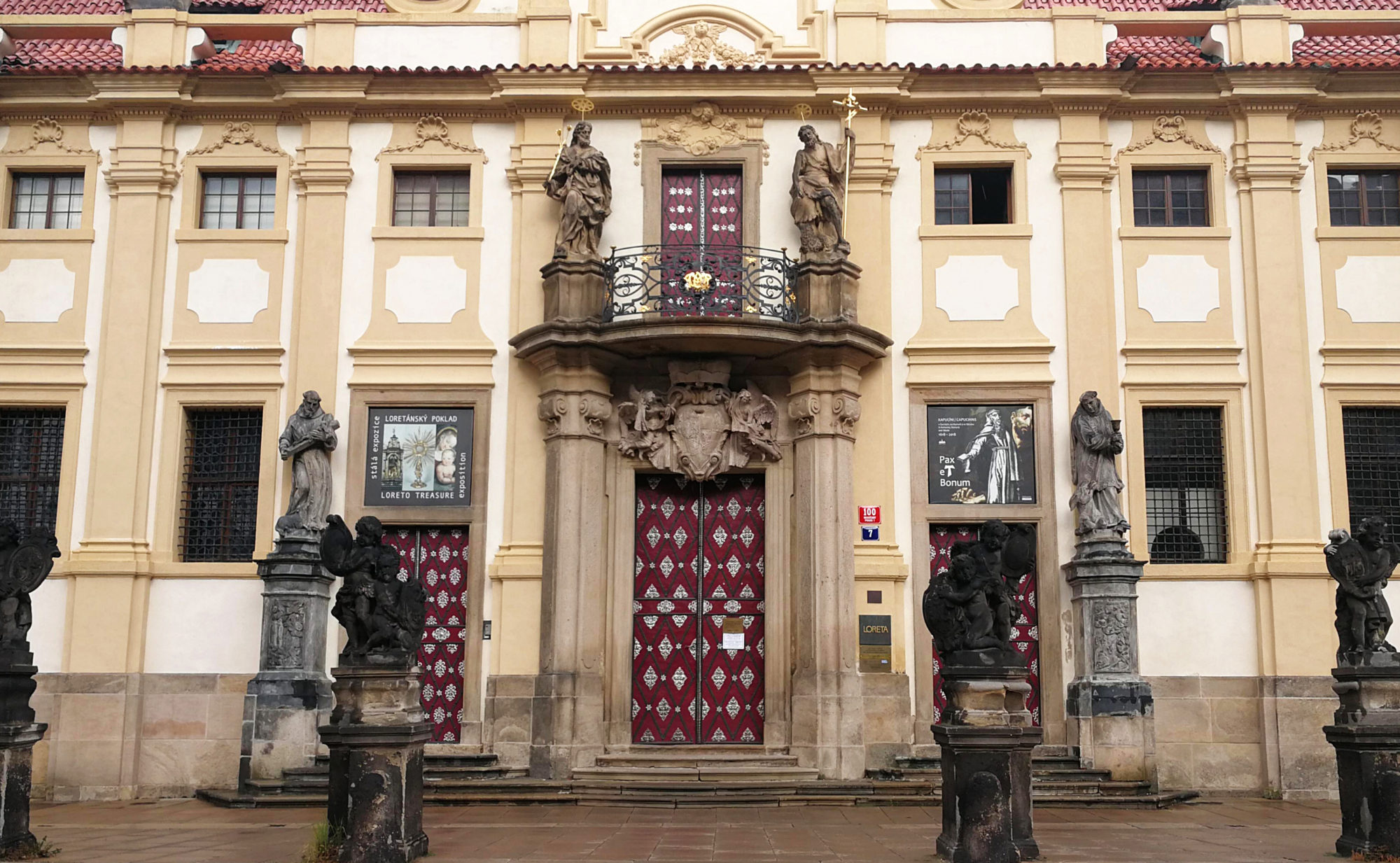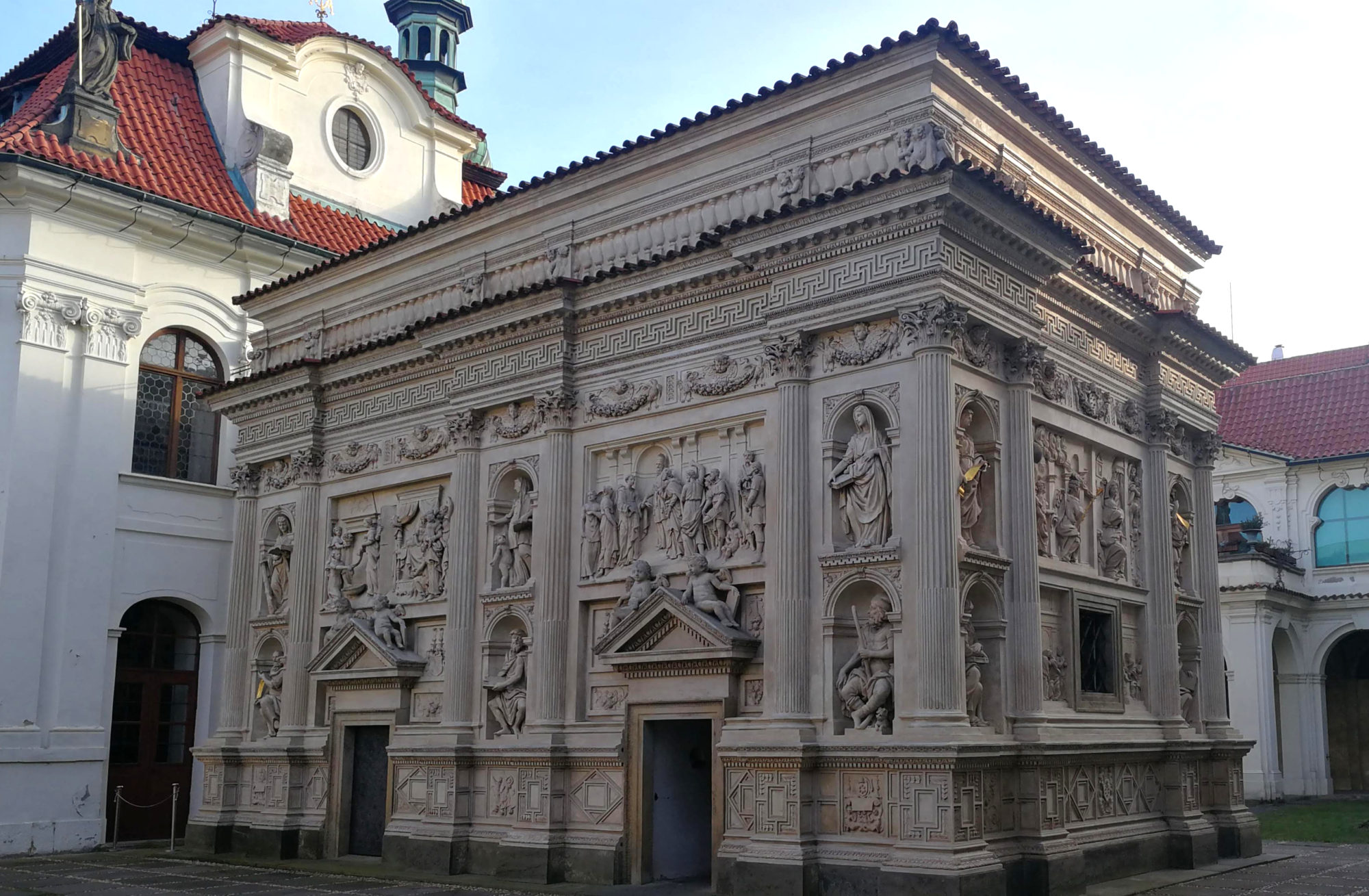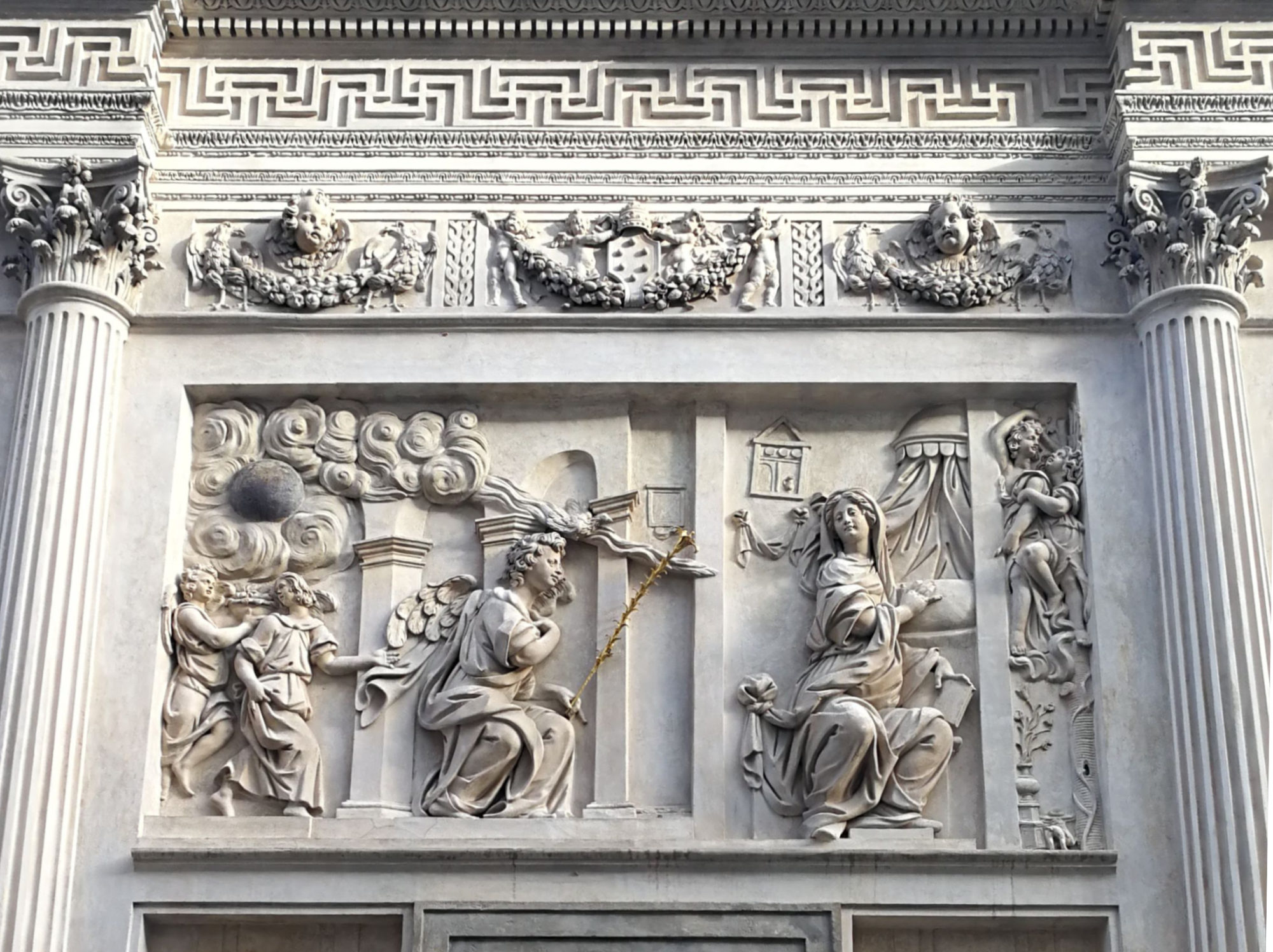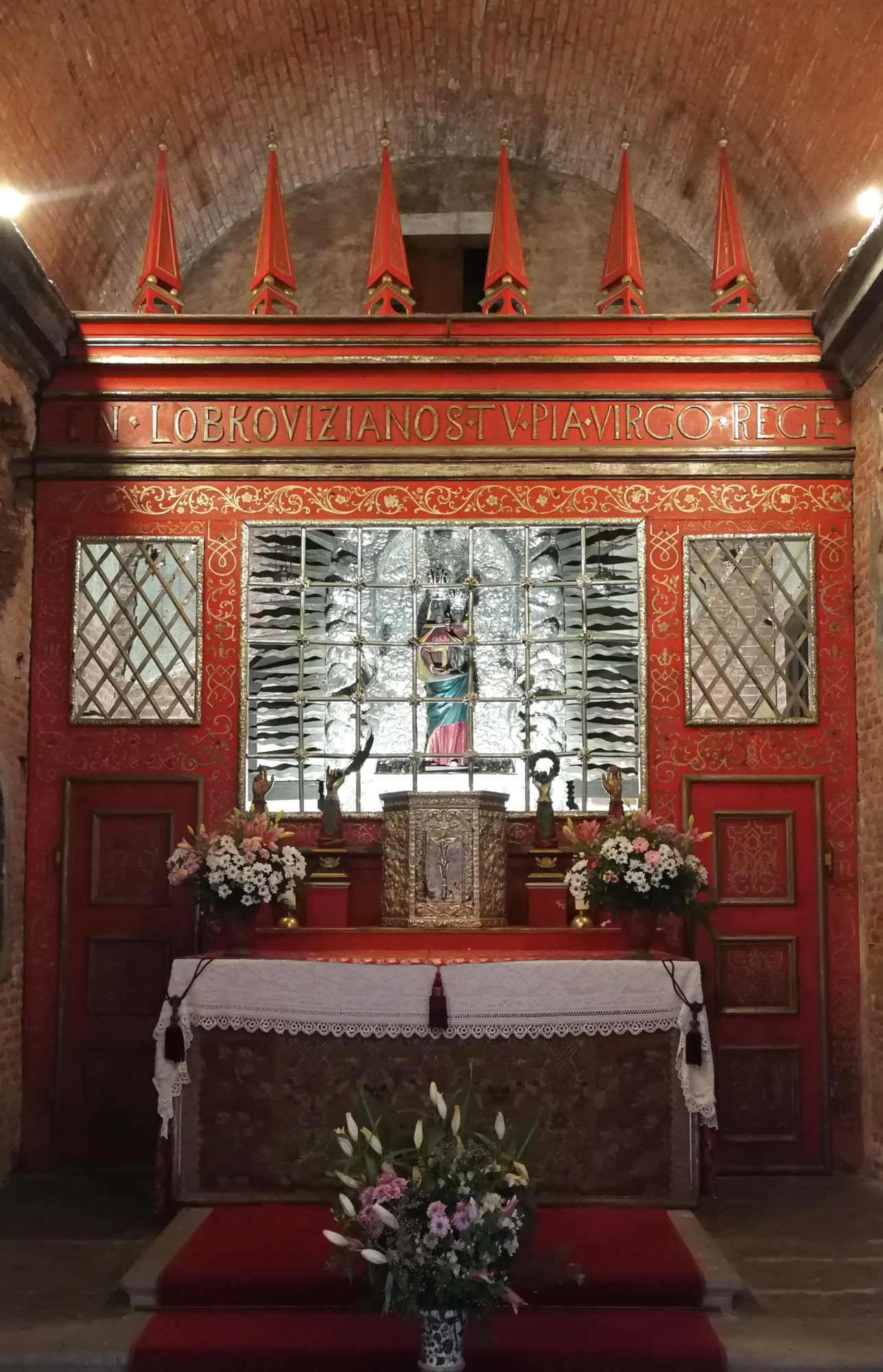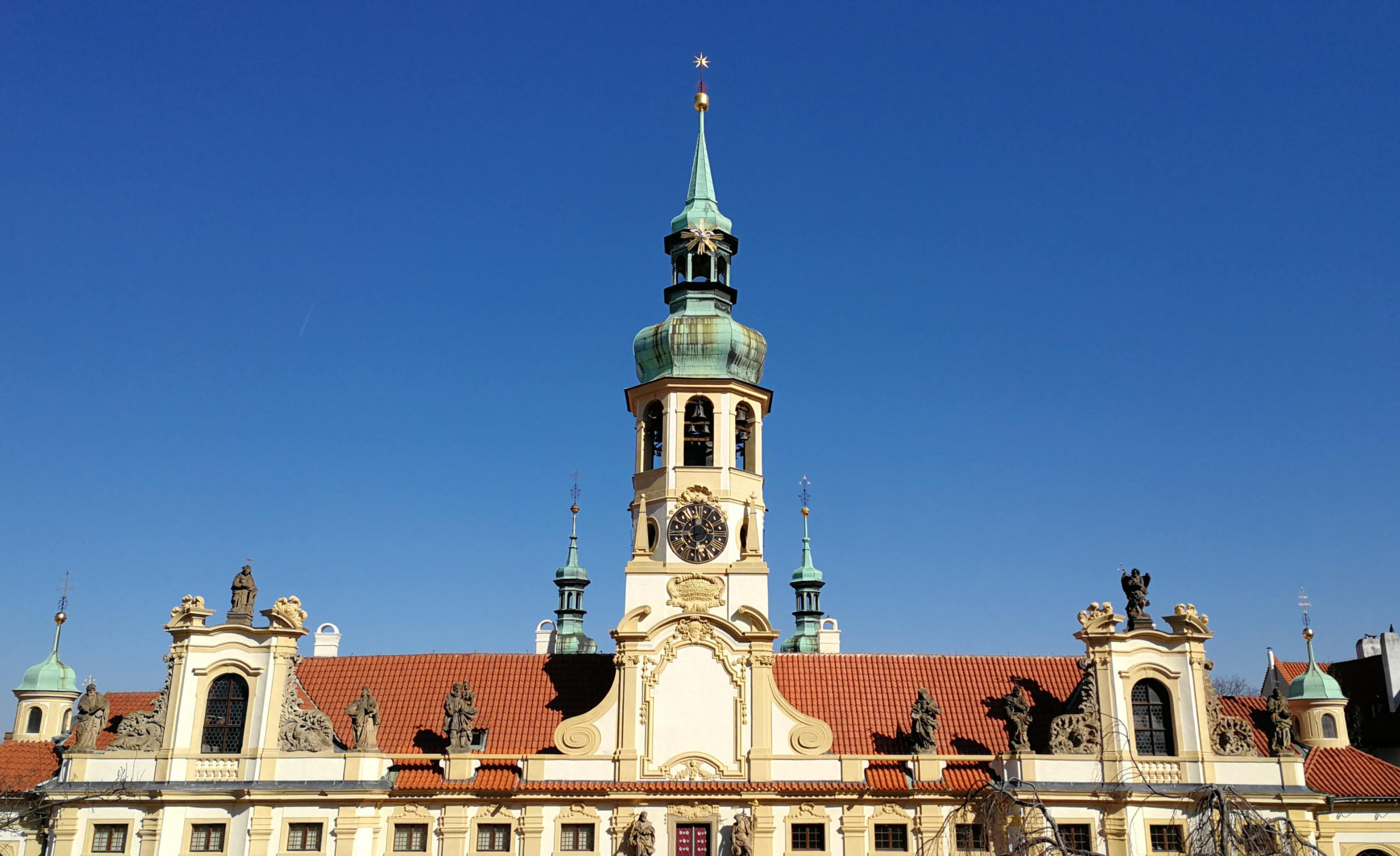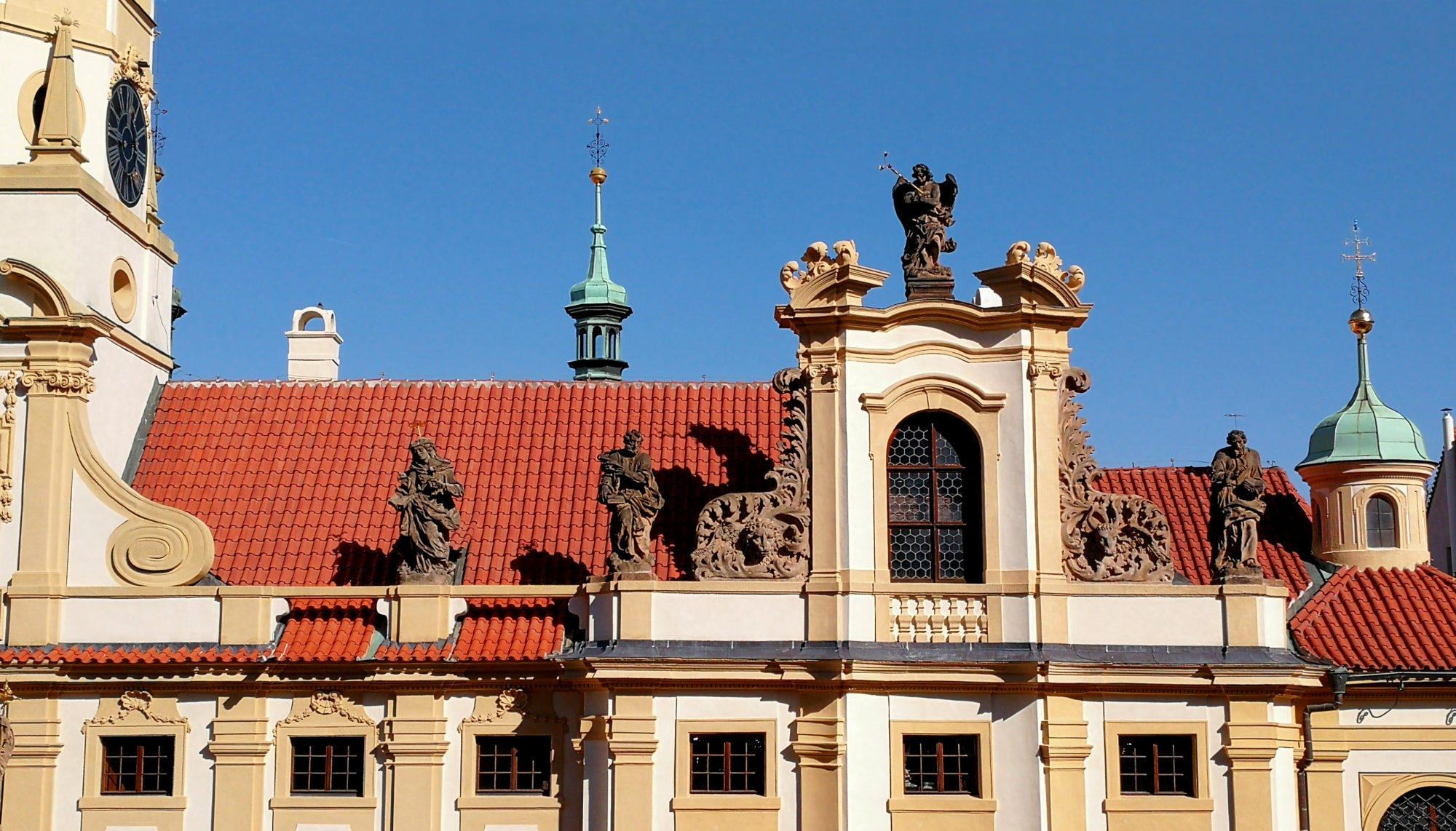Prague Loreto
According to legend, in order to keep it safe from the hands of the infidel, the simple house in which the Virgin Mary is supposed to have lived was transported from Nazareth by divine intervention. Under the watchful eyes of seven angels, the house was flown across the sea, first to Croatia and finally – in December 1295 – to Italy, where it can still be seen today, miraculously preserved inside the basilica of the hilltop town of Loreto.
Curiously, the story of the ‘translation’ of the holy house appears to have some basis in fact: its materials, style and structure make the Loreto a pretty good match for humble dwellings of the Holy Land. Humility, however, has never been the strong suit of the Catholic church; and in 1509, Pope Julius II decreed that the ‘Santa Casa’ should receive an upgrade. He commissioned Donato Bramante to create a sculpted marble shell for the house, whose panelled sides would depict the events of Mary’s life, including the Annunciation and the birth of Jesus.
Bramante’s shrine, with sculpted bas-relief panels by Jacopo Sansovino, was an immediate sensation. Over the course of the next hundred years or so, anyone with the means to do so commissioned copies of the Santa Casa to be erected as private chapels or as tombs for their (generally aristocratic) families. In southern Bohemia, for example, the Dietrichsteins of Mikulov had their enormous family vault built in the shape of the holy house and placed, somewhat unusually, in the centre of the village.
It was the Dietrichstein tomb, in turn, that inspired Benigna Kateřina Lobkowicz to build a ‘Loreto’ of her own near to Prague Castle, as a place of private devotion and as a crypt for members of her family. To that end, she arranged for an Italian architect from Vienna, Giovanni Battista Orsi, to provide an exact replica of the Santa Casa. Constructed between 1626 and 1631, the Lobkowicz Loreto had painted exterior walls; only later were Sansovino’s reliefs reproduced – in impressive detail – by Giovanni Bartolommeo Cometa.
Inside, the ‘holy hovel’ was copied in detail, including, remarkably, a gash in the brickwork replicating lightning damage to Mary’s original house. But instead of the inscription recording that this was the site of the Annunciation, the Prague version has the Latin motto ‘En, Lobkovizianos, tu, pia Virgo, rege’ – ‘Come Thou blessed Virgin, direct [the path of] the Lobkowiczes’.
Surrounding the Santa Casa, Orsi created a peaceful cloister containing chapels dedicated to the Holy Family and associated saints. Many of these began as mere alcoves but were expanded by donation over the decades that followed. The architectural imprint of the Bavarian-born Kryštof Dientzenhofer can be seen in the chapel of Saint Francis and the church of the Nativity (both dating from 1717) and also in the re-worked western facade of the entire complex. In this work he was assisted and eventually succeeded by his son Kilián Ignác, the greatest of Prague’s baroque architects.
The central tower, built to house a thirty-bell carillon, predates the Dientzenhofers by twenty-five years. Its bells were manufactured in Amsterdam by Claude Fremy and donated to Loreto by a local merchant whose daughter had undergone a miraculous cure. They have sounded the Marian hymn ‘A thousand times we greet thee’ since 15 August 1695. An additional mechanism allows the bells to be played manually; this rare privilege is accorded to very few, but they include – on his visit to Prague in 1990 – the iconic (and indeed iconoclastic) American musician Frank Zappa.
A touching if improbable story is associated with the carillon. A poor widow of Malá Strana set aside a coin for each of her children, to be given to them at their coming of age; but they all died in childhood, so the money that would have set them up in life instead paid for the tolling of their death-knell. When the widow herself passed away with no money left to pay for her own funeral expenses, the bells of Loreto spontaneously rang out across the rooftops to celebrate the life of this good woman of Prague.
